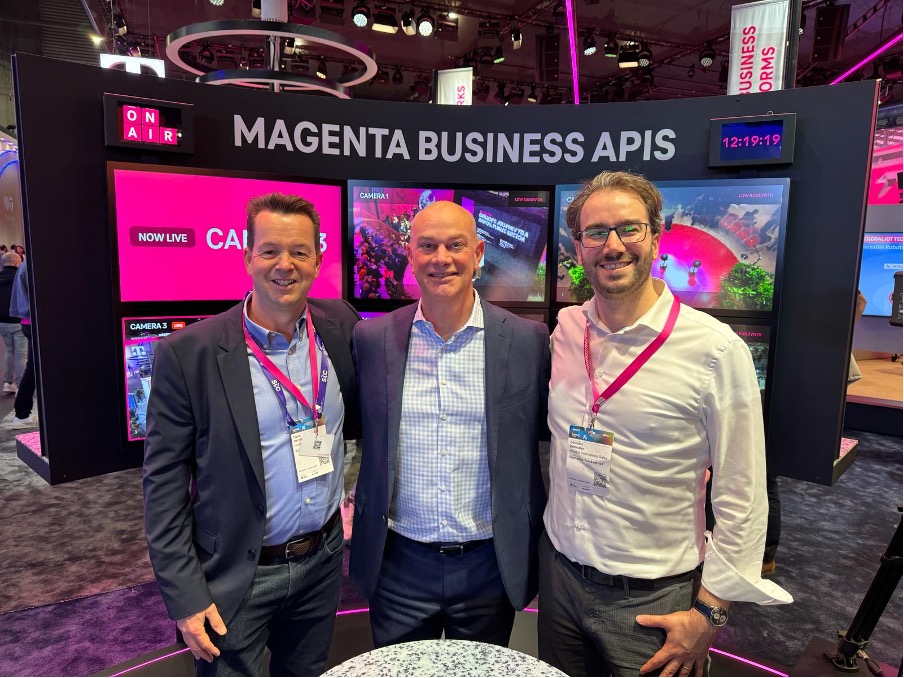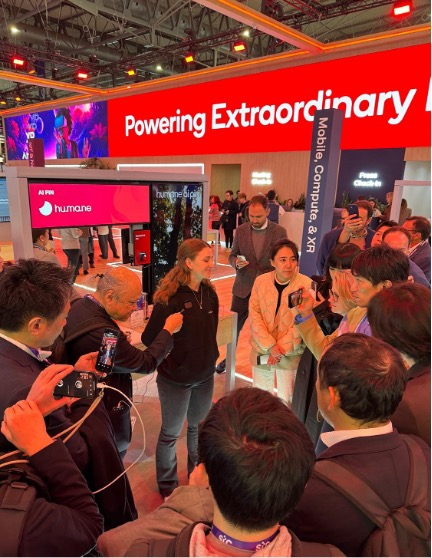Amrop at Mobile World Congress 2024
Where thought leaders become change-makers
Mobile World Congress, which took place in Barcelona last week, is the largest and most influential event for the connectivity ecosystem - the global mobile operators, device manufacturers, technology providers, vendors and all those interested in the future of tech.
Amrop's Global Digital Practice’s Telecom sub-practice was represented at the event by Bo Ekelund, Partner at Amrop Sweden, who met with clients and industry leaders. Ekelund’s focus at Amrop is work in the industrial, telecom and energy sectors and he has long international experience supporting transformation of traditional industries into the digital world.
The event provided a unique chance for industry leaders to immerse themselves in the latest hot topics and work together to share key takeaways and insights.
Read on for a glimpse at Bo Ekelund’s key takeaways from Mobile World Congress this year!

MWC 2024
- Unprecedented attendance/ more than 50% from other industries (verticals)
- New vertical opportunities raise challenges for leadership (skills)
- An explosion of OpenRAN and 5G API driven businesses enable a new world of industrial productivity and smart cities
- Decentralization of AI – the growth of on-device Gen AI
This year’s event saw a record number of participants – over 101 000 people attended, and, moreover, more than 50% were from verticals - other industries outside the traditional telecom sector. “I first attended the MWC back in 1996, when it was still a get-together for mobile operators, themed around joint concerns, new phones, and standards,” Ekelund remembers. “This year it was clear that its more about the opportunities that lie in a ubiquitous connectivity for the world.” Sectors like automotive, consumer goods, energy and industrials were represented, which, of course, tells the story about the rapidly growing, fundamental importance the mobile industry has as a platform for growth for other sectors. Mobile and wireless connectivity is intertwined and is expected to be permeating nearly all products and services moving forward.
These new opportunities inevitably mean change to what it means to be lead a company – this is a new landscape. How do you use the new opportunities? This, of course, has important implications for the recruitment and leadership advisory sector too, and companies, such as Amrop, and we need to keep abreast and be aware of all the latest developments in order to be fully equipped when it comes to helping companies select leaders for what’s next.
MWC also witnessed the explosion of mobile operators opening up 5G networks to third-party development through APIs. Such model might present challenges when it comes to aligning across borders and networks, but it is clear that with these APIs it’s possible to unleash a lot of creativity locally: small connectivity and software companies will be helping, for example, smaller industrial sites to utilize the full potential of connectivity infrastructure. Industry leaders engaged in demonstrations of implementation of smart cities, smart energy solutions, autonomous transportation, connected healthtech solutions and personal tools – most of them directed towards a more sustainable world. These collaborations are driven by telecom operators and different industry verticals who are rapidly joining hands with increased productivity and sustainability as objective. “For example, if you run a steel mill and want to increase your productivity, the dialogue is now between you, your mobile operator, third-party software and connectivity developers and a wide range of your suppliers. You need to know how to bring this into an effective and collaborative ecosystem, because, if you don’t do it, your competitors will,” states Ekelund.

The groundbreaking advancements in AI, 5G, and Wi-Fi showcased, and publicly predicted by Qualcomm and many others, spearheads a new era of intelligent computing everywhere, revolutionizing industries, devices, and consumer experiences. The effects of AI on chips, meaning, decentralized artificial intelligence, were widely discussed: there would be lots of components with an increased amount of localized computing power – a lot more processing power, generative AI applications on the device itself, at a very low power consumption, in a very small size. “Something like this is likely to enable a more flexible and efficient utilization of the bandwidth available for connecting that computing power to cloud and other networks,” Ekelund observes. “So, it is clear that distributed computing and cloud computing will grow quickly. In June 2023, McKinsey & Co published an article estimating that Generative AI is expected to have a broad impact across industries - that it could add the equivalent of $2.6 trillion to $4.4 trillion in economic benefits annually. Attending, we could not help witness the magic of a product called Humane Ai Pin which was elected Best in Show - the world's first AI wearable that allows the user to bring connectivity and On Device AI with them everywhere and interact with the world around them.”
For more insights, reach out to Bo Ekelund or the Amrop Digital Practice members in your country!
